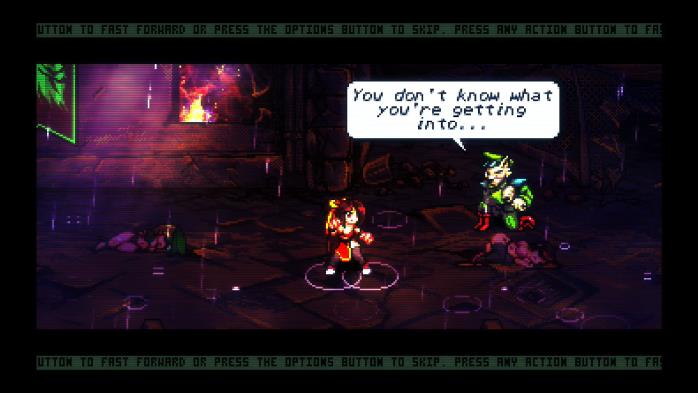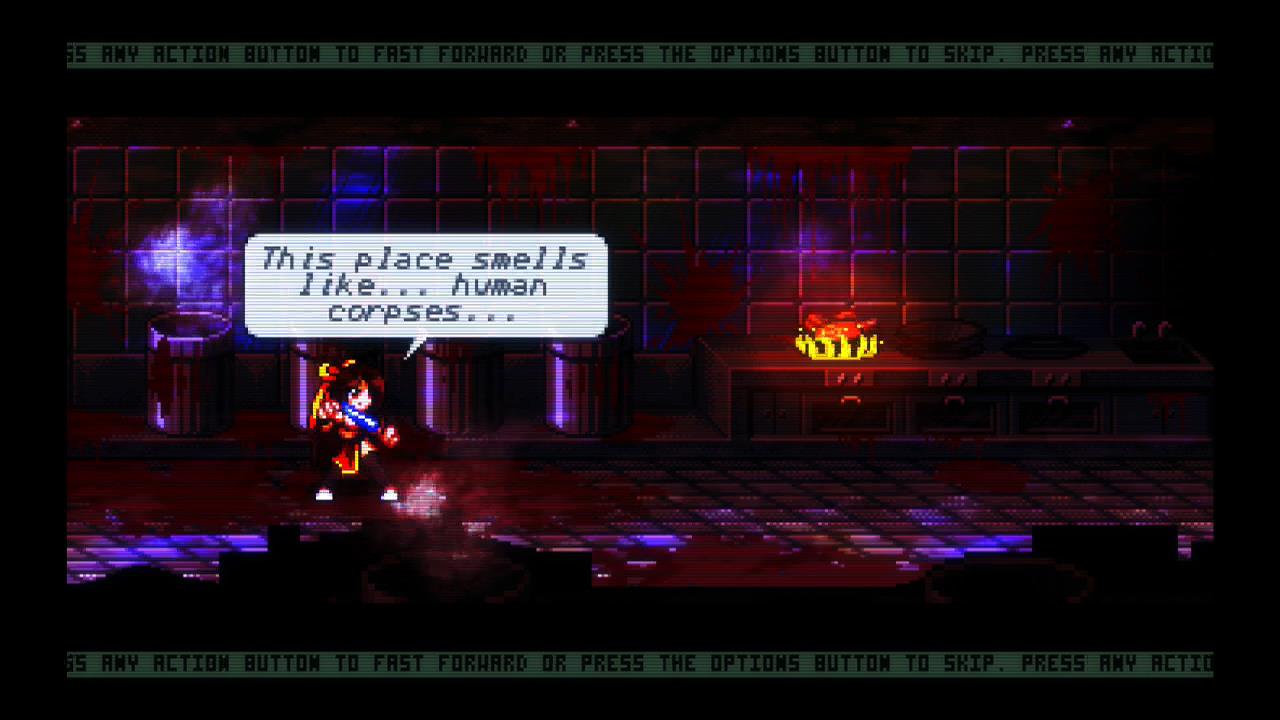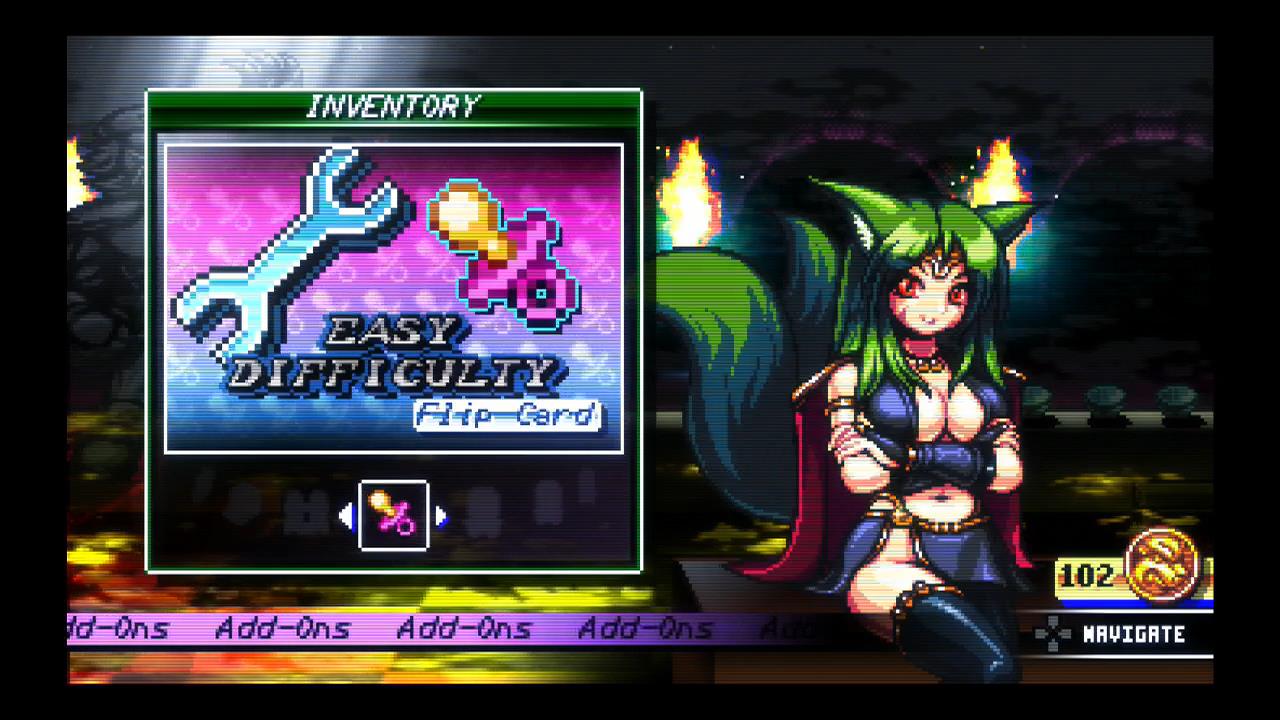Fight’N Rage is the Stardew Valley of early- to mid-‘90s beat-‘em-up arcade games. It’s not that Fight’N Rage honors or pays tribute to the genre; instead, it grabs everything it can from several inspirations at once, adds a few modern innovations, and binds it all together with solid sprite work and a hard-driving chiptune soundtrack.
Fight’N Rage doesn’t imitate something like Final Fight so much as it walks the night in its skin.
That’s both good and bad. Fight’N Rage is a fun, immediately accessible arcade game, with a surprisingly deep combat system. However, it also brings forward several of the drawbacks of ‘90s quarter-munchers, things that got left in the dumpster on purpose as the genre evolved away from the arcades, and it’s to the game’s overall detriment.
Fight’N Rage is a two-person production, with code, sprite art, and design by Uruguayan indie developer Sebastián García, and music by Gonzalo Varela. It’s been out on Steam for a little over two years now, where it acquired a significant following before it made its way to the Switch in September and the PS4 at the start of December.
Fight’N Rage Review: The Good Parts of the ‘90s With Some Bad Habits
Initially, the plot is about as threadbare as it gets. Fight’N Rage is set in what feels like one of those ‘80s-style nuclear post-apocalypses. Civilization is crumbling, humans are an endangered species, and bandit packs of mutated animals are on the rampage.
When the game opens, the three initially playable characters — fanservice battery Gal, highly visible ninja Norris, and renegade mutant Ricardo — are present when a band of marauders hits the village they’re in.
From there, the plot branches off in multiple directions, which is one of the most interesting things about the game. There are a lot of hidden options and level exits in Fight’N Rage that determine which stages you go through, which bosses you fight, and even what your characters’ motivations happen to be.
For example, when you reach the last boss of the first stage, he’s holding a woman hostage. If you run up on him, he kills her, which sets your character on a direct mission of revenge against the mutants. If you save a throwing weapon to use on him, you can save the woman, which starts a story branch in which you try to get her to safety. Both routes involve entirely different stages, events, and boss fights.
You can take further detours as you go, some of which are well-hidden, and which eventually lead you to one of eight potential endings. It provides you with a lot of replay value and gives you some real game-affecting secrets to hunt for. It’s something I wish more games did.
The combat’s the reason you’re here, though, and that’s where Fight’N Rage shines. It’s a simple enough system, which will be instantly familiar if you’ve ever played a ‘90s beat-‘em-up before. One button’s your basic attack, which can chain into a four-hit combo; one’s a jump; and one’s a special attack, which runs off a self-charging meter by your health bar.
Fight’N Rage starts with a tutorial, much like the old SNK arcade games did. It explains some of the finer points of the combat system, but it leaves many of the details for you to discover.
Those details owe a lot to head-to-head fighting games, particularly Street Fighter 3. Among other things, you can parry attacks by tapping the D-pad towards or away from an enemy, use your special attack to break out of an enemy’s combo, jump to recover instantly from a hard knockdown, and quickly dodge up or down by double-tapping in that direction.
Each of your basic moves changes dramatically depending on the direction you’re pushing, and you can even combo into super attacks. For a three-button game, Fight’N Rage has a lot going on, and it’s a lot of fun to experiment with what you can do.
Each of the three initially playable characters has their own moves, rather than simply being old-school strong/fast/balanced archetypes.
Norris has a slide kick, a vicious barrage of punches, and the Izuna Drop; Gal isn’t just the “kick chick,” but has a lot of aerial maneuverability and one of the best screen-clearing special attacks in the game. Ricardo can destroy whatever he touches in a few big hits and has a huge amount of crowd control on tap, which doesn’t quite compensate for the fact that he has the land speed of a bulldozer.
There’s a lot to discover here, and it all feels natural. It’s easy to jump into Fight’N Rage, although it might be a little easier if you’ve done time with the 16-bit beat-‘em-ups it’s based on, but pulling off the game’s flashier moves requires some practice and a bit of skill. You can muddle through the game with the basic stuff, but even at a beginner level, you’ll occasionally blunder into a combo that liquefies half a dozen mutants at once and feel like a god of war.
Fight’N Rage does a lot to improve on the systems of the games that inspired it, but at the same time, it has a few of the drawbacks found in those older games.
Each stage of Fight’N Rage is designed as an endurance test, meant to whittle you down bit by bit with a constant barrage of surprise attacks. Enemies come by the half-dozen from every direction, springing ambushes and sudden attacks that are difficult to dodge unless you know they’re coming.
When you reach bosses, each one is designed to initially be a brick wall, with unusual special moves, high damage output, and constant reinforcements. They aren’t that bad once you’ve seen them a couple of times and can learn their patterns, but once you’re past Stage 2 or so, any boss fight you run into is likely to lead straight to a game over.
This was the kind of thing that was a genre standard in the ‘90s. The games were designed to suck more quarters out of your pockets. Every stage was a veiled Hell of unfair hits. The challenge was to pick your way through them bit by bit, avoiding as much damage as possible and conserving your resources.
In general, Fight’N Rage does so much to iterate on its combat system that the level design feels even more like a throwback. It’s built to be deliberately unfair on an initial run, but once you know what’s happening and how to counter it, it gradually gets easier.
That doesn’t mean it isn’t obnoxious, particularly with several of the later bosses and stages. There’s one in Stage 3 who has a nearly invincible, inescapable combo that he can land on wakeup; another has an extensively telegraphed leaping grab that does about 45% damage on hit. There’s a flying boss that you fight while you’re stuck on a raft, with a minimum amount of room to move, and it seems like Gal is the only character who can hope to do anything to him at all.
Fortunately, Fight’N Rage doesn’t punish you quite as much as some of its predecessors do. Losing a game sends you back to a recent checkpoint, although that can mean losing quite a bit of progress in some of the more intense stages.
The game does exert a sort of soft pressure towards going for the one-credit clear, though. Whether you lose or win a game, you’re awarded in-game coins for your final score, which are used to unlock features in the Extras menu.
This includes a head-to-head battle mode, which I haven’t seen since the original NES Double Dragon; an easy difficulty mode; a training mode, which highlights the flexibility of the combat system; a total of 14 alternate costumes for each of the main characters, some of which are more than simple palette swaps; and a ton of other things that I haven’t unlocked yet.
The general idea, I assume, is that you’re supposed to lose your way through Fight’N Rage at first, learning the level branches, figuring out the easiest routes, and generally getting your feet wet. Once you’ve got a bit of experience, you can start working on that elusive single-credit clear, and from there, head up to the hardest difficulties.
It’s a strange way to run things, and it feels like it’s focused a little too heavily on the speedrunner community, to the point where you have the option of displaying Twitch-style run timers on the empty parts of the screen. It’s more casual-friendly than I’m making it sound, but you can tell who the game is aimed at, and it doesn’t do the overall package a lot of good.
Also, I want to talk about the boobs.
Fight’N Rage is absolutely seething with half-naked women, in ways that would’ve seemed gratuitous in the heyday of arcades, let alone now. Every female human character in the game dresses like you caught them in the middle of their ninja-themed burlesque show.
Gal, in particular, gets whacked in the chin by her own chest every time she takes a step and flashes her underwear during her basic combo. Hell, the game’s initial boot screen is focused directly on her crotch.
I’m not docking the game any points for this, but it’s a little strange. I’d be happy to recommend this game to most people, but it would come with the qualification that aesthetically, it’s aimed directly at horny 13-year-old boys.
Fight’N Rage Review — The Bottom Line
Pros:
- Combat system is simple to pick up, easy to do cool things with, and difficult to master.
- Tons of unlockables, including bonus modes, extra costumes, more playable characters, and additional difficulty settings.
- Ton of replay value from multiple endings and often-secret story branches.
- Main characters are distinctly different from one another.
Cons:
- Has some of the 16-bit era’s worst design habits.
- Challenge primarily runs off of the need rote memorization.
- Plot is pretty disjointed, particularly for a game with branching story paths.
- A lot of the backgrounds are pretty uninspired, particularly early on.
In general, Fight’N Rage is an extensive game that successfully iterates on much of what made the ‘90s arcade beat-‘em-up such a fondly-remembered genre. Still, I could do without its emphasis on memorization to make your way through the game. It’s not a deal-breaker, particularly if you’re playing in co-op, but it’s a slight irritation.
The good news is that Fight’N Rage has an extensive, flashy, easy-to-use combat system that you can hand to players of any skill level. This is easily one of the best co-op experiences of the year for the PS4, old as it is, and at $20, it’s an easy call for your next game night.
[Note: A copy of Fight’N Rage was provided by SebaGamesDev for the purpose of this review.]














Published: Dec 18, 2019 06:51 pm